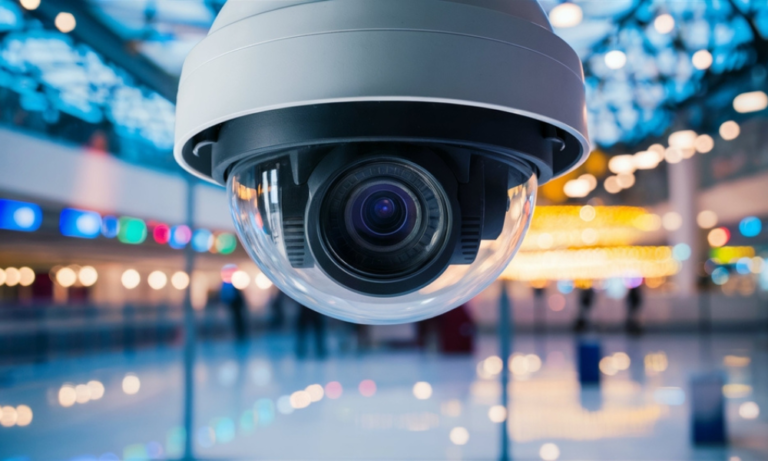Estimated reading time: 5 minutes
When I first ventured into the world of home security, I was overwhelmed. Alarms, cameras, sensors—there was so much to learn! Whether you’re new to this or just want a clearer path forward, let me walk you through the basics. I’ll share practical steps, tips, and insights to simplify the process and ensure you’re on the right track (and yes, I’m here to prevent you from accidentally installing a camera upside down—don’t ask how I know).
What You’ll Learn in This Guide:
The benefits of a home security system.
Types of alarms and cameras and which might suit your needs.
A step-by-step guide to installing alarms and cameras.
Common mistakes to avoid during installation.
Optional add-ons for advanced security.
Why Home Security Matters
Your home is your sanctuary, and protecting it isn’t just about keeping burglars out. It’s about peace of mind. A properly installed security system can deter intruders, alert you to dangers like fire or leaks, and even help you keep tabs on the kids when you’re out.
But beyond functionality, there’s something reassuring about knowing you’ve taken steps to safeguard the things—and people—you love most.
Types of Home Security Systems

Before we dive into installation, let’s talk about the two main approaches:
- DIY Systems:
These are ideal if you’re handy and want to save on installation costs. They often come as kits with easy-to-follow instructions. Plus, they’re typically app-based, letting you monitor your home from your phone. - Professionally Installed Systems:
If you want the pros to handle it, this is your route. They’re more expensive but tend to be more robust. These systems usually include 24/7 monitoring, which means someone’s always keeping an eye out for you.
What You’ll Need
Before rolling up your sleeves, here’s what I recommend having:
Tools: A drill, screws, and mounting brackets.
Wi-Fi Connection: For most modern systems.
Ladder: Unless you’re seven feet tall and don’t mind balancing on a chair.
Time: Installing these isn’t hard, but rushing leads to mistakes. Trust me, misplaced sensors are a headache.
Step-by-Step Guide to Installing Alarms

1. Choose Your Alarm Locations
Start with high-traffic entry points: the front door, back door, and ground-floor windows. Alarms work best where intruders are most likely to try their luck.
2. Install Sensors
Most alarms come with door/window sensors. Position the contact sensors so they’ll trigger when the door or window opens. A handy tip? Test the placement before sticking anything down. Adhesives are unforgiving.
3. Set Up the Control Panel
The control panel is your security system’s brain. Install it near your main entrance for easy access. Follow the manufacturer’s instructions to connect it to your sensors.
4. Test Your System
Don’t skip this! Activate the system and check if all alarms trigger correctly. Nothing’s worse than thinking your home is secure when a sensor isn’t working.
Step-by-Step Guide to Installing Cameras
1. Pick the Right Camera
Start with basics: an indoor camera for monitoring kids or pets, and an outdoor one for entry points. If you’re into tech, get cameras with motion detection and night vision.
2. Placement is Key
Outdoor cameras should cover doors, driveways, and blind spots. Indoors, focus on main areas like the living room or hallways. Avoid aiming them directly at windows—glare from the glass can mess with the footage.
3. Mount the Cameras
Use mounting brackets for outdoor cameras, ensuring they’re secured high enough to avoid tampering. Indoors, keep it subtle. A corner placement works best.
4. Connect and Configure
Most cameras connect to your Wi-Fi. Download the associated app, follow the setup prompts, and ensure your camera is live. Test the feed to ensure you’re capturing what matters most.
Common Mistakes to Avoid
- Skipping Tests: Always double-check that alarms and cameras are working.
- Poor Camera Angles: Avoid pointing cameras too high or at the wrong spot. You don’t need a perfect view of the ceiling fan.
- Weak Wi-Fi Coverage: Cameras need a strong signal. Consider a range extender if needed.
Add-Ons to Consider
If you want to take your security system to the next level, here are a few extras I love:
Video Doorbells: Great for knowing who’s at the door (even when you’re not home).
Glass Break Sensors: Ideal for rooms with large windows.
Environmental Sensors: Detect smoke, carbon monoxide, or leaks before they become disasters.
Smart Integrations: Sync your security system with smart locks, lights, and thermostats.
Maintenance Tips
Your security system isn’t a “set it and forget it” deal. Regularly check the sensors, replace batteries, and clean camera lenses. If your system has software, update it periodically to keep it secure.
Final Thoughts
Installing home alarms and cameras might seem daunting at first, but trust me, it’s manageable with a bit of patience. By securing your home, you’re investing in more than just safety—you’re investing in peace of mind. And that, my friends, is priceless.



